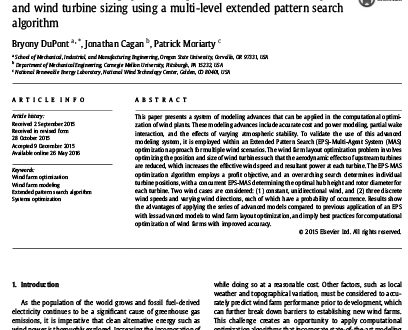In this work. a collection of modeling advances was employed within an EPS-MAS wind farm optimization algorithm to help approach real-world applicability in resulting turbine layouts and turbine geometries. These modelsdincluding an extrapolation of the NRELWind Cost and Scaling Model and means to accommodate both partial wake interaction and wind sheardare explored with variation in atmospheric stability conditions to better understand how the stability behavior at a particular farm site could affect a potential wind farm layout. The resulting layouts indicate that for those areas with a narrow angular range of predominant wind directions (similar to the unidirectional scenario). stable atmospheric conditions create higher power and higher profit scenarios than either unstable or neutral conditions. These layouts also include a larger number of turbines of mid-range size. For an area with a wider distribution of wind onset angles. such as the multi-directional case shown in this work. the opposite is true e unstable atmospheric conditions lead to higher profit and higher power development. In addition. the unstable multi-directional case layouts included fewer. but signifi- cantly larger turbine geometries. Given the variation in resulting layouts when accommodating real-world modeling and the ability to incorporate the atmospheric stability conditions of a potential farm site. this work can inform wind farm developers of the effects of stability on the power development of a wind farm. and can influence the inclusion of these models in real-world farm development.

 Iran Energy News Oil, Gas, Petrochemical and Energy Field Specialized Channel
Iran Energy News Oil, Gas, Petrochemical and Energy Field Specialized Channel



